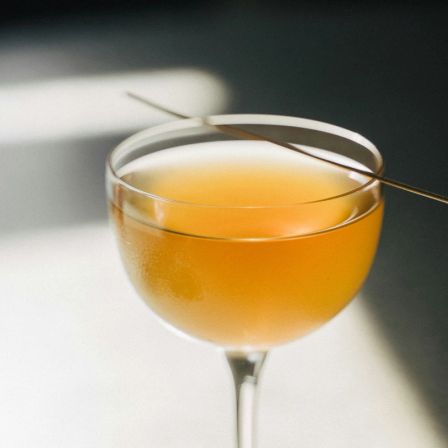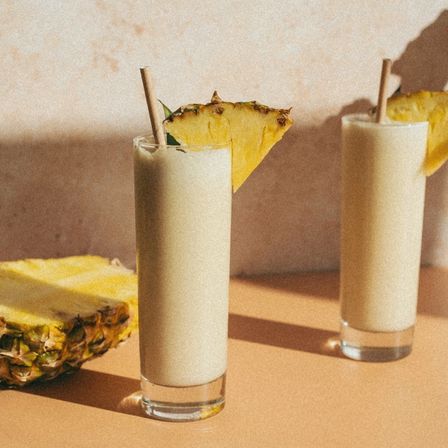- Lifestyle
Cider’s just gone upmarket
It’s “the native wine of England”. And now a few producers are finally treating it as such, says Molly Steemson
- Words By Molly Steemson

My grandparents escaped communist Hungary with very little: a few books, a pack of cards, the clothes on their backs, a belief in the importance of education, and their reserved continental drinking habits. Unlike their new neighbours, they never went to the pub, or got drunk. They never had wine with dinner. Once in a while, however, they would allow themselves a small indulgence — cider.
Cider was the only alcoholic beverage I can remember being in my grandparents' house. Purchased in zeppelin-shaped three litre bottles, it was kept on the kitchen counter, by the window. The brown plastic blended right in, it was the same colour as their lacquered counters and linoleum floors. I don’t know how long it took them to get through a bottle, but I assume it was a number of weeks. They drank it from small glasses and at room temperature.
I like to think of my first cider as a nod to my ancestry, a disrespectful tribute: A room temperature Strongbow, fresh from a boy’s backpack, in the cemetery we used to break into to smoke cigarettes. I enjoyed (used here in the loosest possible sense) cider like this for a number of years: at festivals, or in parks, but most often on street corners. It was always warm, always sweet, always bad. Like most of my friends, I abandoned it as soon as I reached a legal drinking age. It was for kids, like Smirnoff Ice or blue WKD — something to tide you over between apple juice and wine.
It was after I’d finished university that cider had its long overdue rehabilitation in my life. One sunny weekday afternoon, a colleague took me to the French House. He ordered a bottle of Cidre Breton which we shared, leant against that Dean Street windowsill. It was crisp and elegant, a little (but not too) sweet. I thought it was perfect. A bottle, between two, got us just drunk enough.
It was the French (the Normans, to be precise) who reminded the English how good cider can be. Over the next few hundred years, its popularity rose so much that, by 1320, the church had to issue an official warning to parishioners not to baptise their children in it. It was over 500 years later, in the 1880s, that cider production was commercialised. Cider was no longer just for drinking at home, or on the farm. Now, producers could buy apples from farmers, and bottle the cider they made to sell.
I like to think of my first cider as a nod to my ancestry, a disrespectful tribute: A room temperature Strongbow, fresh from a boy’s backpack, in the cemetery we used to break into to smoke cigarettes.
Numbers vary, but the UK is said to consume between 38 and 45% of the world’s cider, the majority of which is industrially produced. British cider-making regulations state that a drink only has to contain 35% apple juice to be called cider. There aren’t so many rules outside of that (although the government dictates that anything below 1.2%ABV or above 8.5%ABV can’t be called cider, either), and the large manufacturers (three of whom who make 90% of the UK’s cider) all make theirs from apple concentrate, not juice. There is a small, but substantial and growing, movement against the globalisation and industrialisation of british cider-making. Like craft beer and natural wines, cider is returning to its artisanal roots.
In 1666, John Evelyn wrote that Cider is ‘the native wine of England’, a fact which is, in many ways, true. Although most commonly drunk like beer, cider has much more in common with wine. The methods of production have many of the same steps and can benefit from many of the same interventions. When it’s made well, cider can be extraordinary.
People like Felix Nash, of The Fine Cider Company, have helped bring ‘real’ cider back to UK drinkers — supplying restaurants like St. John and The Fat Duck, as well as innumerable independent wine shops. The ciders and perrys he sells are hand-harvested, fresh-pressed, and wild-fermented (without the addition of industrial yeasts). Many of these are sold in 75cl bottles and are sealed with corks or crown caps. Nash encourages his clients to treat them more like a wine, and drink them out of a wine glass. They are priced accordingly. These ciders pair excellently with food, and the different varietals and cider-making methods mean that fine cider can be sweet and rich, or fresh and dry, and oaky, mineral, sparkling, or still. Nash wants us to believe in the grand possibilities of cider drinking, and I’m convinced.
In 1666, John Evelyn wrote that Cider is ‘the native wine of England’, a fact which is, in many ways, true. Although most commonly drunk like beer, cider has much more in common with wine.
I am a great advocate of summer cider drinking, and this year the options (if not always the weather) are thoroughly encouraging: A bottle of TK TK with your roast pork belly on a Sunday lunchtime, Cidre Breton in Soho on a sunny afternoon, a glass of perry in the garden before dinner. I do, however, have my limits. You probably won’t find me scaling the gates of Kensal Green Cemetery with a backpack full of Strongbow. But I can be sentimental. A glass of week-old Bulmer’s in my grandmother’s kitchen? I wouldn’t say no.
Come on in the Chablis lovely, Your new home of drinks.
Stay up to date with all the latest from House Of Decant.


